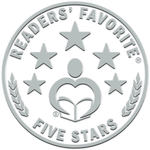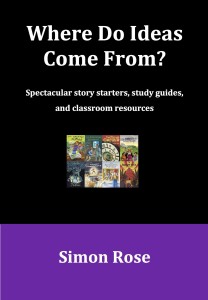Where Do Ideas Come From?
Available at: Amazon / Kobo / Barnes & Noble / iBooks / Smashwords
Where Do Ideas Come From?
Where Do Ideas Come From? examines how The Alchemist’s Portrait, The Sorcerer’s Letterbox, The Clone Conspiracy, The Emerald Curse, The Heretic’s Tomb, The Doomsday Mask, The Time Camera, and The Sphere of Septimus can be used to create workshops and creative writing exercises.
These include writing time travel stories, creating superheroes and comic books, inventing imaginary worlds and fantasy kingdoms, exploring fascinating historical eras, imagining future technological developments, and examining ancient mysteries and civilizations.
Where Do Ideas Come From? provides suggestions and recommendations for teachers developing classroom projects based on the books but might also serve as inspiration for aspiring writers of all ages.
 Where Do Ideas Come From? is available at the following locations:
Where Do Ideas Come From? is available at the following locations:
Ebook
Amazon Japan Smashwords iBooks Scribd Barnes and Noble
Amazon Canada Indigo/Chapters Amazon USA Amazon UK Amazon France Amazon Germany
Amazon France Barnes and Noble
Reviews
“There is nothing better than a good story to sweep one’s imagination away to another world. But these stories originated somewhere and there are always some interesting tangents that a reader can pursue based on a good story. Teachers are always looking for new and exciting ways to expand on a story shared in class. Simon Rose’s Where Do Ideas Come From? does just that. He takes the content of his own published stories and provides a wonderful teacher’s resource with many interesting and diverse avenues for young readers to explore.
Simon is the author of several books for young readers. The Alchemist’s Portrait is a time travel story that starts with a visit to the art gallery. The main character, Matthew, travels to various historic time periods that in itself provides topics for class projects. For his young people’s novel, The Clone Conspiracy, Simon makes suggestions to help teachers and students explore the scientific and very controversial topic of cloning and other medical marvels. Simon explores each of his young people’s novels and presents innovative exercises and projects to help teachers expand on the class’s learning as well as to heighten their awareness of specific topics, historic, scientific and artistic, and inspire them to want to read more. As Simon points out, “A novel might also inspire children to create their own stories.” This is a great teacher’s resource, but it is also a useful guide for other authors of young people’s literature. The idea of creating a learning guide for young people’s books is truly inspired.”
Emily-Jane Hills Orford for Readers’ Favorite




